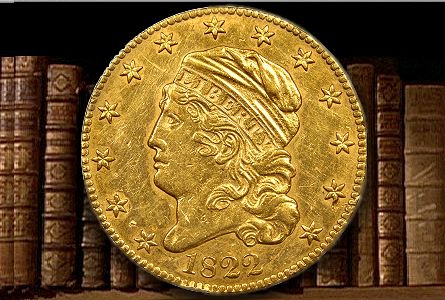By Mark Ferguson for CoinWeek – MFrarecoins.com …..
“They’re just pieces of metal,” Elvira Clain-Stefanelli, the late curator of the National Numismatic Collection at the Smithsonian, once told me as she showed me a tray containing major U.S. rarities, like a 1913 Liberty nickel and an 1804 silver dollar, among others. I had trouble understanding her statement as I was thinking, “then I guess a Van Gogh painting is just paint on canvas.” I was young at the time, and she was the authority, so I didn’t question her statement, but it has haunted me for years.
Since that time, I’ve thought a lot about that remark she made to me. Of course, she was right, they are just pieces of metal, but so are a Rolls Royce and a Chevy. So what gives a rare coin its significance and why is coin collecting a passion for some? It’s people… and how we revere these little pieces of metal. We put significance in a rare coin’s history, its rarity, as compared to all the other little pieces of metal called coins, its characteristics, like a scarce die variety, and its condition, as compared to perfection and other like-kind coins. In other words, what do these little pieces of metal mean to people?
 Rarity, condition, and a coin’s characteristics are a given, but history has a lot to do with a coin’s significance. The two most famous coins known outside the hobby may be the 1913 Liberty nickel and the 1804 silver dollar. There are a few others as well, like the 1909-S VDB Lincoln cent, even though most of the public doesn’t know all the initials or what they represent, and the 1955 Doubled Die cent. There are 5 known examples of the 1913 Liberty nickel and 15 known examples of the 1804 silver dollar.
Rarity, condition, and a coin’s characteristics are a given, but history has a lot to do with a coin’s significance. The two most famous coins known outside the hobby may be the 1913 Liberty nickel and the 1804 silver dollar. There are a few others as well, like the 1909-S VDB Lincoln cent, even though most of the public doesn’t know all the initials or what they represent, and the 1955 Doubled Die cent. There are 5 known examples of the 1913 Liberty nickel and 15 known examples of the 1804 silver dollar.
But, do the public, and even most experienced coin collectors, know about the king of gold rarities, the 1822 $5 gold coin, in which there are just three known examples?
No!
Not many people, even the majority of experienced coin collectors, know about the 1822 $5 gold coin. It’s the stories and the publicity behind the 1913 nickel and 1804 dollar that make them famous. The 1822 $5 has no remarkable story, at least not one that has been uncovered, except that virtually all of the 17,796 pieces struck were melted because the value of its gold content exceeded its face value at the time.
The 1913 Liberty nickels were clandestinely struck at the Philadelphia Mint. To this day, no one knows who struck them, when, or why. They are shrouded in mystery. The 1804 silver dollars were first struck in the 1834 to 1835 period, and again in the 1859 to 1860 period. It wasn’t until 1962 when the real truth was revealed about why 1804 silver dollars were originally coined – they were used as diplomatic gifts. Both of these coin issues have remarkable stories that give them their fame. I will be writing more extensively about the 1804 silver dollars for CoinWeek during the weeks leading up to the American Numismatic Association convention, which will be in the Chicago area during mid-August this year.
In addition to a rare coin’s story that makes these coins legendary, there are other associated collectible objects that comprise their histories. For example, early commemorative coins have original presentation holders they were housed in when sold, as well as pamphlets and sales literature, old letters, and related souvenirs from the events or people they commemorated.
I once owned a copper frame from a 1915 double Panama-Pacific commemorative set of gold coins, which also included the silver half dollar. A double set contains examples of two coins of each issue to show the obverse and reverse. There are only 10 to 15 of these copper frames known. They’re part of the histories of these coins, but they’ve gone down in price and have become under-appreciated since the introduction of “slabbing,” or encapsulating coins in grading service holders. When I sold my copper frame in 1983 I could have bought a nice new car with the proceeds. Now that probably wouldn’t be the case. Nevertheless, these copper frames are part of the story of Panama-Pacific commemorative coins.
Even auction catalogs are part of a rare coin’s history and are collected for rare pieces that can be traced back into time. A rarity that is accompanied by old letters, envelopes, and notes carries with it an “aura” about that coin. For example, the Dexter specimen of the 1804 dollar is famous for the letters and affidavits from U.S. Mint officials that used to accompany the coin whenever it traded hands. These letters were pictured in the Dunham Collection auction catalog by B. Max Mehl in 1941. Now they are unaccounted for. The only record of them are the photographs in this auction catalog and a printer’s proof I own that is comprised of detailed hand-drawn copies of the letters. This printer’s proof is accompanied by a documentary work of art that was created in 1887 for James Dexter. They are part of this coin’s story – its history, which begins with the coin’s mysterious placement in an 1884 auction in Berlin, Germany and culminates with a lawsuit initiated in 1886 in which U.S. Mint officials issued the affidavits to settle the case.
There are other objects which make up a coin’s story, such as dies that exist for territorial or pioneer gold coins, original sketches for the designs of coins, even old plastic “flips,” or coin envelopes, that coins were in when sold at historic auction sales. Pedigrees, such as “Norweb,” “Eliasberg,” and “Pittman,” for example, are also very important for many coins. They add to a coin’s history and significance. Many collectors will pay significant premiums for coins with such pedigrees. On the other hand, common coins like a 1921 Morgan silver dollar or a 1964 Roosevelt dime, for example, have little to no historical significance in and of themselves.
So, yes, coins are “just pieces of metal.” To the layman, that’s what most coins are. However, to the educated collector they come alive with history – the history of what people have done to shape these little pieces of metal.
 Mark Ferguson was a coin grader for PCGS , a market analyst for Coin Values and has been a coin dealer for more than 40 years. He has written for the ANA, Coin Dealer Newsletter, Coin World, Numismatic News, , Coin Values, The Numismatist and currently has a weekly column on CoinWeek. Mark can be reached at Mark Ferguson Rare Coins ( www.mfrarecoins.com)
Mark Ferguson was a coin grader for PCGS , a market analyst for Coin Values and has been a coin dealer for more than 40 years. He has written for the ANA, Coin Dealer Newsletter, Coin World, Numismatic News, , Coin Values, The Numismatist and currently has a weekly column on CoinWeek. Mark can be reached at Mark Ferguson Rare Coins ( www.mfrarecoins.com)





Mark-
Great article, especially the part where you speak of pedigrees and how significant they are to the history of the coin. As and adviser to great collection both buying and selling ultra rarities, the pedigree plays a huge part in the transaction. As was the case when we placed the Ultra Rare 1838 Proof eagle last year. Not many have had the chance to see yet place a coin of this magnitude. Mintage of 3 and only two available for private ownership. It was a pleasure to have handled such a piece, graded PR65 – CAC and belonging to the likes of Pittman, Farouk, Green, Woodin, Parmalee and Brand. One of the most decorated coins ever. Coin Week helped trace it’s pedigree along with John Albanese. We are very proud to control this coin. Jeff Sherid